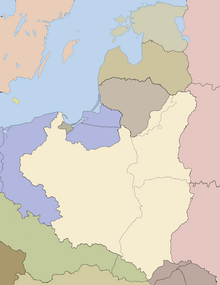| Battle of Hel | |||||||
|---|---|---|---|---|---|---|---|
| Part of Invasion of Poland | |||||||
 Craters, post-detonation of Polish torpedo warheads in the Chałupy area | |||||||
| |||||||
| Belligerents | |||||||
|
|
| ||||||
| Commanders and leaders | |||||||
|
|
| ||||||
| Strength | |||||||
|
38,000 infantrya 2 pre-dreadnoughts 2 destroyers Dozens of aircraft |
2,800 infantry 1 destroyer 1 large minelayer Several light naval craft | ||||||
| Casualties and losses | |||||||
|
Luftwaffe: 46–53 aircraft Heer: several dozen killed and wounded Kriegsmarine: 1 destroyer damaged 1 pre-dreadnought lightly damaged 1 minesweeper sunk |
50 killed, 150 wounded, rest taken prisoner 1 destroyer sunk 1 minelayer sunk All light craft sunk, damaged, and / or captured. | ||||||
Location within Poland, 1937 borders | |||||||
The Battle of Hel (Polish: Obrona Helu, literally "the Defense of Hel") was a World War II engagement fought from 1 September to 2 October 1939 on the Hel Peninsula, of the Baltic Sea coast, between invading German forces and defending Polish units during the German invasion of Poland (also known in Polish historiography as the September Campaign). The defense of the Hel Peninsula took place around the Hel Fortified Area, a system of Polish fortifications that had been constructed in the 1930s near the interwar border with the German Third Reich.
Beginning on 20 September 1939, after the Polish Army Pomorze had been defeated in the Battle of Tuchola Forest and after other Polish coastal strongholds had capitulated in the Battle of Westerplatte, Battle of Gdynia and the Battle of Kępa Oksywska, Hel was the only substantial pocket of Polish military resistance left in northern Poland. It was also the site of the invasion's only naval surface engagement.
The Germans blockaded the defenders of the Hel Peninsula and did not launch major land operations until the end of September 1939. Some 2,800 Polish soldiers under Rear Admiral Włodzimierz Steyer, part of the Land Coastal Defence formation, defended the Hel Fortified Area for about 32 days, until they surrenderedb due to low supplies and morale.
